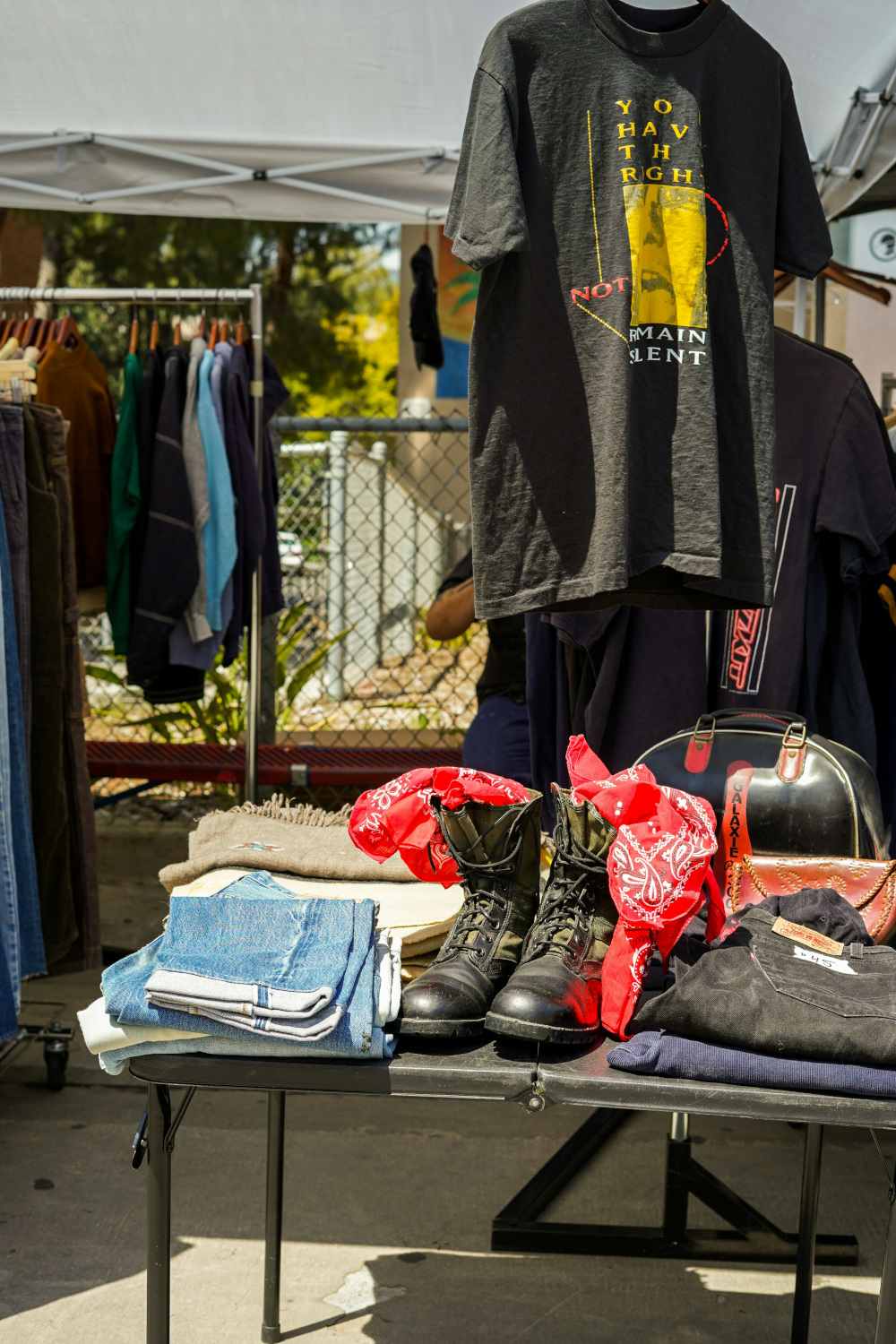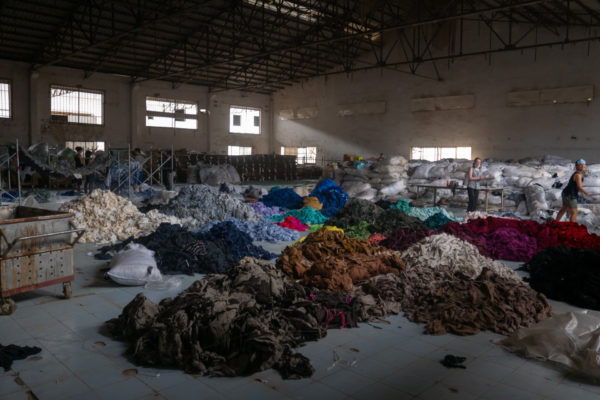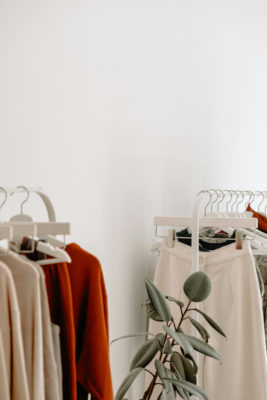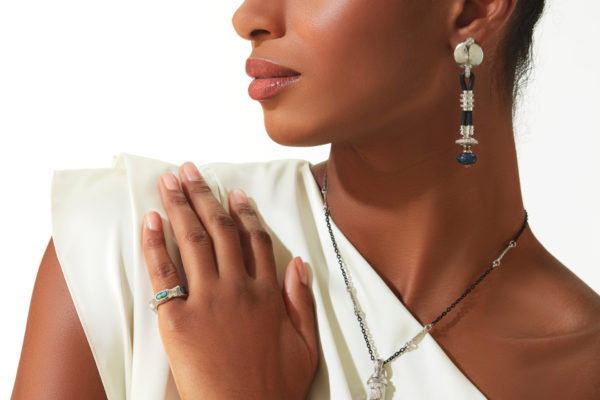
What Is Underconsumption Core? Inside TikTok’s Slow Fashion Trend
By
9 months ago
Is it really as sustainable as we think?
There’s a new movement bubbling to the surface on TikTok. Following in the wave of smart thrifting, minima living and deinfluencing, creatives have taken to the platform to say that not only is less more, it’s simply enough. Underconsumption core is thriving – here’s everything you need to know.
What Is Underconsumption Core?
As the name suggests, the TikTok-viral ‘underconsumption core’ trend is all about dropping habits of excess in favour of a stripped-down lifestyle. ‘Underconsumption core is a social media trend that is being hailed as the new response to fast fashion and overconsumption,’ explains Hanushka Toni, founder and CEO of Sellier. ‘TikTokers especially are promoting the concept of only buying what you strictly need, and then using it up, or wearing and re-wearing it until it needs to be mended or replaced.’
@dainty.nugs Some underconsumption tips ive been trying to follow this year, i am actually spending WAY less already than last year on material items and way more on experiences, traveling, hobbies and spending time with loved ones! #underconsumption #deinfluencing #underconsumptioncore ♬ original sound – speedz!
In terms of fashion, the trend can take several directions – creating capsule wardrobes, avoiding micro trends, doing brand research and, of course, avoiding shopping hauls. ‘This trend also focuses on versatile, timeless pieces that have a longer lifespan and reduce waste,’ says Hanushka. ‘It aligns with a broader movements toward sustainability and responsible consumer behaviour, aiming to create a more balanced, conscious approach to fashion consumption.’
Where Did It Come From?
In an era where fast fashion, hyper-speed marketing and ‘more is more’ spending habits still reign supreme, underconsumption core seems a rather contradictory trend. But really, this brand of deinfluencing has been around for years. It’s how to make trainers last longer by reinforcing their heels, using a bag until it’s unrecognisably worn out, and finding ways to squeeze 10 outfits out of one dress.
It’s not necessarily new, but underconsumption core has taken over. And while it has been grouped under the same umbrella as deinfluencing, the two aren’t exactly the same either. Gaining speed at the end of 2023, the deinfluencing trend sees creators point out products and say we don’t need them. But where underconsumption finishes the rhetoric there, deinfluencing would offer up an alternative to the original item – encouraging the cycle the consumption.
Underconsumption core, therefore, seems to be the next step up from deinfluencing. It cuts off the need for excess, and throws our consumption habits more directly into the spotlight.
And Why Now?
With a huge following online – over 35 million videos on TikTok, to be precise – underconsumption core shows no signs of slowing down anytime soon. But what exactly gave it the push to make it mainstream? ‘The trend has had a surge in momentum for numerous reasons,’ says Hanushka. ‘One is the increasing awareness, thanks to social media, of the environmental and ethical issues associated with fast fashion. With high-profile exposés of fast fashion brands like Shein and Boohoo, consumers are becoming more aware of the impact of the clothing they’re buying, and the environments garment workers are having to face.’
It also comes down to how we want to address our own habits. As Hanushka notes: ‘The rise of conscious consumerism, supported by greater transparency and accountability from brands, has also encouraged people to adopt more mindful consumption habits, thus fuelling the popularity of the trend.’
What Does Underconsumption Core Mean For Fashion?
If this is a trend that will take off like we think it will, it could have a pretty big impact on consumer-led industries – including fashion. If we’re buying less, where does that leave brands? Hansuhka predicts it will first hit companies that hinge on mass production for profit, especially fast fashion brands. ‘This trend will have huge repercussion for fast fashion brands in particular,’ she confirms. ‘Consumers will aim to shop less, and only buy when something has been used up or needs to be replaced, signifying a broader shift towards sustainability and ethical practices. It means that brands which focus on quality, eco-friendly materials and transparent supply chains will be favoured. Shoppers will also be opting to shop from brands that produce timeless, versatile pieces that will last a lifetime, which are also great from an investment perspective.’
@carolinetusiuk AKA normal consumption #overconsumption #sustainability #sustainableliving #sustainablebeauty #creatorsearchinsights ♬ original sound – speedz!
Are There Pros & Cons?
From what we’ve heard of underconsumption core, there seem to be plenty of pros – especially from an environmental perspective. ‘On the positive side, it offers significant environmental benefits by reducing waste and pollution through the promotion of sustainable materials and ethical production practices,’ says Hanushka. ‘It encourages consumers to prioritise quality over quantity, leading to the purchase of high-quality, durable items that last longer. With this in mind, the also trend supports fair labour practices, improving working conditions in the fashion industry, and offers long-term cost savings for consumers who invest in timeless, versatile pieces.’
So, it sounds great – but is there a catch? While the trend sounds good on paper, it does have its limitations. The main issue pointed out by TikTokers is the trend’s similarities the lifestyles of many low-income people, with the main difference being that many people have no choice in whether or not they under-consume. Add to this the fact that many high-quality, slow fashion items usually sit at higher price points, and underconsumption core can ring hollow to audiences who have to use these methods.
@itshardouthereman my culture of underconsumption is not your costume! #underconsumption #fyp coffee morning vibes #viral #underconsumptioncore ♬ original sound – speedz!
In a viral video that now have over five million views, TikTok user @itshardouthereman says ‘my culture of underconsumption is not your costume!’
Is Underconsumption Core Really Sustainable?
With this in mind, we need to ask whether underconsumption core is actually something we can dub ‘sustainable’, or simply a dressed-up fad. ‘Overall, compared to a lot of other fashion trends that are pushed on social media, I’d say underconsumption core is largely aligned with sustainability and promotes positive consumer behaviour,’ says Hanushka. ‘It supports the use of durable, versatile pieces and ethical production practices, aiming to lessen the multiple industries’ environmental impacts.
‘However, like with all trends, it has faced scrutiny, with debates over motives, effectiveness and affordability,’ she continues. ‘Many users on social media have commented that people are just jumping on the “underconsumption bandwagon” in order to follow a trend, rather than a genuine effort to combat climate change and help improve the labour force – both in fashion and beyond.
Hanushka also warns that it’s up to us to be firm in what we want and what we do shop. ‘In addition, it’s important consumers stay vigilant when researching a brands sustainability practices,’ she says. ‘In light of the trend, mass-market brands are likely to exaggeratively claim to be sustainable without making significant changes.’
What Does TikTok Say?
It seems the general consensus is that, while overconsumption core is good for spreading awareness, it’s not necessarily as helpful when it comes to action. ‘Underconsumption basically repackages poverty lifestyles into sustainability,’ says environmentalist and creative Isaias Hernandez in a TikTok video. ‘Now, I’m not saying that people who are promoting underconsumption are doing bad things. I think it’s important that we show the general social media user that we cannot live in an over-consumer society that is very materialistic and draining our ecological resources.
@queerbrownvegan Underconsumption core explained #underconsumption #underconsumerism #capitalism #lowwaste #zerowaste #sustainability ♬ original sound – Isaias Hernandez
‘Now many people are saying it’s the same thing as zero waste, minimalism, sustainability and perfect environmentalism,’ he continues. ‘I really feel that each of those specific words has failed to call out capitalism, and I think that one of my biggest critiques is that it’s not really radicalising enough.
‘I do think that it does raise awareness of like, yes, we should be better consumers, we should repurpose our things. These are realistic things. But the systemic action is still lacking… To me, it’s not really gonna stick long term, if it’s not pushing people to think more radically… I think it’s time for the modern consumer to get back into demanding what’s right.
‘If we don’t move beyond the trends to impact deeper levels of conversation or add more critical analysis and literacy of the ways that we talk about consumerism, I fear that we’re gonna just stop at, “here’s a hard drive, you can recycle it.” And then that’s it. We don’t want that. We want systemic change now.’
How To Get Involved
While it has its ups and downs, it’s still not a bad idea to adopt the tenets of underconsumption core: taking less, using up what you have, mending before throwing away.
From a fashion viewpoint, Hanushka tells us the first thing we can do is simply buy less. ‘Establish a capsule wardrobe from clothing you already own by decluttering,’ she suggests. ‘A trick I saw on TikTok recently is, at the start of the season, to have all of your hangers facing inwards and each time you wear a piece, put it back with the hanger facing you. At the end of the season, you can see which pieces weren’t touched and then you know what to remove from your wardrobe. If you do need to purchase new, make sure you focus on purchasing fewer, high-quality, and timeless pieces rather than items that won’t last a singular wash.’
The next step is to read up, both on the issues surrounding consumption and how we can extend the lifetime of what we already have. ‘Additionally, we all play a role in the rise of fast fashion, and so it’s important we start educating ourselves about sustainable practices and the impact fast fashion has on the environment and labour force,’ says Hanushka. ‘Supporting independent brands and shopping pre-loved will also extend the life-cycle of garments while also helping the environment. Underconsumption core, while it does tend to focus on classic pieces, doesn’t mean you can’t get involved in new fashion trends – upcycling any items you already own will help to refresh your existing wardrobe with trend-led pieces, without buying throw-away garments.’
Featured image: Anastasiya Badun, Unsplash






